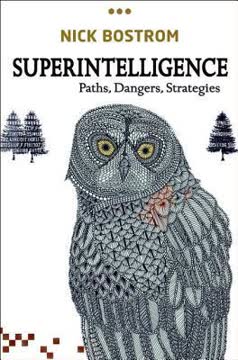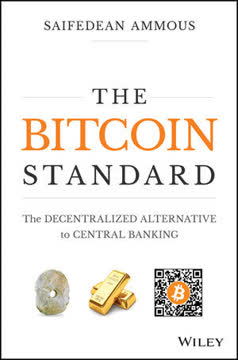Key Takeaways
1. Bitcoin: A Decentralized Digital Currency Revolution
Bitcoin is a collection of concepts and technologies that form the basis of a digital money ecosystem.
A new form of money. Bitcoin represents a groundbreaking innovation in the world of finance. It is a purely digital currency that operates without the need for central banks or traditional financial institutions. Instead, it relies on cryptography, distributed networks, and consensus mechanisms to enable secure, peer-to-peer transactions.
Key features of Bitcoin:
- Decentralized: No single entity controls the network
- Limited supply: Only 21 million bitcoins will ever be created
- Pseudonymous: Transactions are linked to addresses, not identities
- Borderless: Can be sent anywhere in the world quickly and cheaply
- Transparent: All transactions are publicly visible on the blockchain
Bitcoin's creation in 2009 by the pseudonymous Satoshi Nakamoto marked the culmination of decades of research in cryptography and distributed systems. It combines four key innovations: a decentralized peer-to-peer network, a public transaction ledger (the blockchain), a decentralized mathematical and deterministic currency issuance system, and a decentralized transaction verification system.
2. The Blockchain: Bitcoin's Ingenious Public Ledger
The bitcoin system, unlike traditional banking and payment systems, is based on de-centralized trust.
A revolutionary record-keeping system. The blockchain is Bitcoin's breakthrough solution to the double-spending problem in digital currencies. It is a chronological, append-only ledger of all Bitcoin transactions that have ever occurred. This public ledger is distributed across the entire network, with each full node maintaining a complete copy.
Key aspects of the blockchain:
- Immutable: Once recorded, transactions cannot be altered
- Distributed: Copies exist on thousands of computers worldwide
- Transparent: Anyone can view the entire transaction history
- Consensus-driven: Network agrees on the state of the ledger
- Cryptographically secure: Uses hash functions to link blocks
The blockchain allows Bitcoin to operate without a central authority by creating a shared, verifiable truth about the state of all bitcoins. When a new transaction occurs, it is broadcast to the network, validated by nodes, and then grouped with other transactions into a "block." Miners compete to solve a mathematical puzzle to add this block to the chain, creating a tamper-evident history of all Bitcoin activity.
3. Bitcoin Wallets: Securing and Managing Digital Assets
Users of bitcoin own keys which allow them to prove ownership of transactions in the bitcoin network, unlocking the value to spend it and transfer it to a new recipient.
Your gateway to the Bitcoin network. Bitcoin wallets are software applications that allow users to interact with the Bitcoin network. They manage the user's private keys, which are used to sign transactions and prove ownership of bitcoins. Wallets come in various forms, from simple mobile apps to hardware devices designed for maximum security.
Types of Bitcoin wallets:
- Full-node wallets: Store the entire blockchain
- Lightweight wallets: Rely on external servers for some functions
- Hardware wallets: Physical devices for offline key storage
- Paper wallets: Printed copies of private keys for cold storage
The security of a Bitcoin wallet is crucial, as losing access to one's private keys means losing access to the associated bitcoins forever. Best practices include using strong passwords, enabling two-factor authentication, and keeping backups of wallet data. For large amounts, many users opt for hardware wallets or multi-signature setups that require multiple keys to authorize transactions.
4. Bitcoin Mining: Powering the Network and Creating New Coins
Mining creates trust by ensuring that transactions are only confirmed if enough computational power was devoted to the block that contains them. More blocks mean more computation which means more trust.
Securing the network and minting new coins. Bitcoin mining serves two crucial functions: it secures the network by making it computationally infeasible to alter the blockchain, and it introduces new bitcoins into circulation according to a predetermined schedule. Miners compete to solve complex mathematical problems, with the winner earning the right to add the next block to the blockchain and receive newly minted bitcoins as a reward.
Key aspects of Bitcoin mining:
- Proof-of-Work: The consensus mechanism used to validate blocks
- Difficulty adjustment: Ensures blocks are found roughly every 10 minutes
- Block reward: Currently 6.25 BTC, halves approximately every four years
- Transaction fees: Miners also collect fees from transactions in the block
- Energy-intensive: Requires significant computational power and electricity
As Bitcoin has grown, mining has evolved from a hobby activity using personal computers to a professional industry with specialized hardware (ASICs) and large mining farms. This has raised concerns about energy consumption and the centralization of mining power, leading to ongoing debates within the Bitcoin community about potential alternatives or improvements to the current system.
5. Bitcoin Transactions: How Value Moves Through the Network
Transactions are added to the new block, prioritized by the highest-fee transactions first and a few other criteria.
The lifeblood of the Bitcoin network. Bitcoin transactions are the mechanism by which value is transferred between participants in the network. Each transaction is a data structure that encodes the transfer of value from source transaction outputs (called "UTXOs") to new destination Bitcoin addresses. These transactions are broadcast to the network, verified by nodes, and eventually included in a block on the blockchain.
Anatomy of a Bitcoin transaction:
- Inputs: References to previous transaction outputs being spent
- Outputs: New UTXOs created, assigned to recipient addresses
- Transaction fee: Difference between sum of inputs and outputs
- Digital signatures: Prove ownership and authorize spending of inputs
When creating a transaction, users can choose how much to pay in fees. Higher fees incentivize miners to include the transaction in the next block, resulting in faster confirmation times. Once a transaction is included in a block and that block is added to the blockchain, it gains "confirmations" as more blocks are added on top of it. Generally, six confirmations are considered secure for high-value transactions.
6. The Bitcoin Network: A Peer-to-Peer Electronic Cash System
The bitcoin network is a peer-to-peer network, with each bitcoin client participating by connecting to several other bitcoin clients.
A global, decentralized financial network. The Bitcoin network is a distributed system of nodes running the Bitcoin software. These nodes work together to maintain the blockchain, validate transactions, and relay information across the network. There is no central server or point of control; instead, the network operates through the collective action of its participants.
Key components of the Bitcoin network:
- Full nodes: Store and validate the entire blockchain
- Miners: Compete to create new blocks and secure the network
- SPV clients: Lightweight nodes that rely on full nodes for validation
- Network protocols: Rules for communication between nodes
The decentralized nature of the Bitcoin network provides several advantages, including resistance to censorship, high availability, and the absence of a single point of failure. However, it also presents challenges in terms of scalability and governance. Ongoing development efforts focus on improving the network's capacity, efficiency, and privacy features while maintaining its core principles of decentralization and security.
7. Bitcoin's Future: Potential and Challenges in the Digital Economy
Bitcoin represents the culmination of decades of research in cryptography and distributed systems and includes four key innovations brought together in a unique and powerful combination.
A transformative technology with growing pains. Bitcoin has the potential to revolutionize the global financial system by providing a borderless, censorship-resistant form of money and a platform for financial innovation. However, it also faces significant challenges as it grows and evolves.
Opportunities and challenges for Bitcoin:
Opportunities:
- Financial inclusion for the unbanked
- Programmable money and smart contracts
- Store of value in countries with unstable currencies
- Micropayments and new business models
Challenges: - Scalability and transaction throughput
- Regulatory uncertainty and government reactions
- Environmental concerns related to mining
- User experience and adoption barriers
As Bitcoin continues to mature, ongoing development efforts aim to address these challenges through technologies like the Lightning Network for faster, cheaper transactions, and improvements to privacy and scalability at the protocol level. The success of Bitcoin will depend on its ability to overcome these hurdles while staying true to its core principles of decentralization, security, and censorship resistance.
Last updated:
FAQ
What's "Mastering Bitcoin: Unlocking Digital Cryptocurrencies" about?
- Comprehensive Guide: "Mastering Bitcoin" by Andreas M. Antonopoulos is a detailed guide to understanding Bitcoin and its underlying technology, blockchain.
- For Coders and Non-Coders: While primarily aimed at coders, the book also serves as an in-depth introduction to Bitcoin for non-coders interested in the technology.
- Technical and Practical Insights: It covers both the technical aspects of Bitcoin, such as cryptographic currencies and software development, and practical applications like transactions and mining.
- Emergent Technology: The book explores Bitcoin as a decentralized trust network, likening it to the Internet of money.
Why should I read "Mastering Bitcoin"?
- Expert Author: Andreas M. Antonopoulos is a well-respected figure in the Bitcoin community, offering authoritative insights.
- Comprehensive Coverage: The book provides a thorough understanding of Bitcoin, from its history and technology to its real-world applications.
- Practical Examples: It includes practical examples and code snippets, particularly useful for developers looking to build Bitcoin applications.
- Future-Proof Knowledge: Understanding Bitcoin and blockchain technology is increasingly important in today's digital economy.
What are the key takeaways of "Mastering Bitcoin"?
- Decentralized Trust Network: Bitcoin is more than a digital currency; it's a decentralized network that enables trust without central authority.
- Technical Foundation: The book explains the technical foundation of Bitcoin, including cryptographic principles and blockchain mechanics.
- Real-World Applications: It explores various real-world applications of Bitcoin, from retail transactions to international remittances.
- Developer Focus: For developers, the book provides insights into building applications that interact with the Bitcoin network.
How did Andreas M. Antonopoulos get involved with Bitcoin?
- Initial Skepticism: Andreas first encountered Bitcoin in 2011 and initially dismissed it as "nerd money."
- White Paper Revelation: After reading Satoshi Nakamoto's white paper, he realized Bitcoin's potential as a decentralized trust network.
- Intensive Research: He spent months researching Bitcoin, becoming deeply engrossed in its technology and implications.
- Career Shift: This led him to dedicate his career to Bitcoin, founding startups and writing "Mastering Bitcoin."
What is the intended audience for "Mastering Bitcoin"?
- Primarily for Coders: The book is mainly aimed at coders who want to understand and develop Bitcoin-related software.
- Non-Coders Welcome: The initial chapters are suitable for non-coders interested in the inner workings of Bitcoin.
- Technical Depth: It provides technical depth with examples in Python and Unix-like command-line environments.
- Broad Appeal: While technical, the book's insights into Bitcoin's potential make it appealing to a broader audience.
What is Bitcoin, according to "Mastering Bitcoin"?
- Digital Money Ecosystem: Bitcoin is a collection of concepts and technologies forming a digital money ecosystem.
- Currency and Protocol: It includes a currency (bitcoins) and a protocol for secure, borderless transactions.
- Decentralized System: Bitcoin operates as a fully-distributed, peer-to-peer system without a central authority.
- Mining and Security: New bitcoins are created through mining, a process that also secures the network.
How does "Mastering Bitcoin" explain the history of Bitcoin?
- Cryptographic Roots: The book links Bitcoin's emergence to developments in cryptography and digital money.
- Decentralization Breakthrough: Bitcoin solved the double-spend problem without a central authority, a key innovation.
- Satoshi Nakamoto's Role: It details how Satoshi Nakamoto's 2008 paper introduced Bitcoin as a decentralized cash system.
- Evolution and Growth: The book covers Bitcoin's growth, from its inception to a multi-billion dollar market.
What are the main components of the Bitcoin system?
- Peer-to-Peer Network: Bitcoin operates on a decentralized peer-to-peer network, the Bitcoin protocol.
- Blockchain Ledger: Transactions are recorded in a public ledger called the blockchain.
- Mining Process: Mining is the decentralized process of validating transactions and issuing new bitcoins.
- Transaction Verification: A decentralized system verifies transactions using cryptographic principles.
How does "Mastering Bitcoin" describe Bitcoin transactions?
- Ownership Transfer: Transactions transfer ownership of bitcoins from one address to another.
- Inputs and Outputs: Each transaction has inputs (debits) and outputs (credits), forming a chain of ownership.
- Digital Signatures: Transactions are secured with digital signatures, proving ownership and authorization.
- Transaction Fees: Miners collect transaction fees, which are the difference between inputs and outputs.
What is the role of mining in Bitcoin, according to "Mastering Bitcoin"?
- New Bitcoin Creation: Mining creates new bitcoins, similar to a central bank issuing currency.
- Transaction Validation: It validates transactions by solving complex computational problems.
- Decentralized Trust: Mining ensures trust in the network without a central authority.
- Competitive Process: Miners compete to solve problems, with the winner adding a new block to the blockchain.
What are some real-world applications of Bitcoin mentioned in "Mastering Bitcoin"?
- Retail Transactions: Bitcoin can be used for everyday purchases, like buying coffee at a cafe.
- International Remittances: It facilitates low-cost, fast international money transfers.
- Charitable Donations: Bitcoin enables global fundraising with transparency through the blockchain.
- Business Payments: Companies use Bitcoin for large international payments, streamlining import/export processes.
What are the best quotes from "Mastering Bitcoin" and what do they mean?
- "This isn’t money, it’s a de-centralized trust network": This quote highlights Bitcoin's potential beyond being just a currency, emphasizing its role as a trust mechanism.
- "Nature demonstrates that de-centralized systems can be resilient": Comparing Bitcoin to natural systems like ant colonies, this quote underscores the strength of decentralized networks.
- "Bitcoin is the Internet of money": This analogy positions Bitcoin as a transformative technology for value transfer, akin to how the Internet transformed information exchange.
- "The best way to get the right answer on the Internet is not to ask a question, it’s to post the wrong answer": Reflecting Cunningham’s Law, this quote encourages community engagement and iterative learning in the Bitcoin ecosystem.
Review Summary
Mastering Bitcoin receives high praise from readers for its comprehensive and technical overview of Bitcoin and blockchain technology. Many appreciate the book's balance of high-level concepts and detailed explanations, including code examples. Readers find it valuable for understanding Bitcoin's inner workings, cryptography, and security features. Some note it may be challenging for non-technical readers but still recommend it for anyone seeking in-depth knowledge. The book is praised for its clarity, depth, and ability to demystify complex concepts in the cryptocurrency world.
Similar Books










Download PDF
Download EPUB
.epub digital book format is ideal for reading ebooks on phones, tablets, and e-readers.







